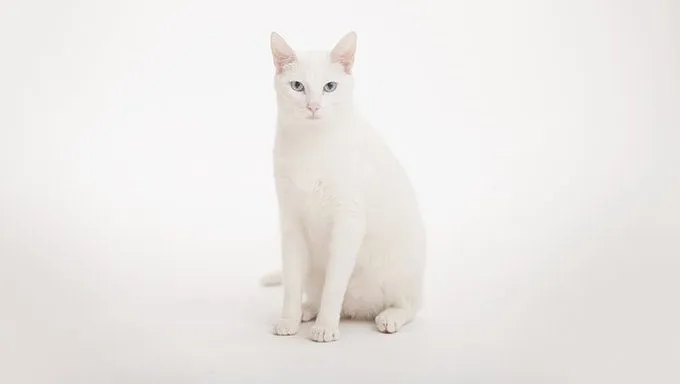Hey there, fellow cat enthusiasts and curious minds! When it comes to our feline friends, there’s a lot more beneath the fur than meets the eye. Albino cats, often mistaken for simply “white” cats, have a unique genetic makeup that sets them apart in striking ways. Today, we’re embarking on an illuminating journey to unravel the mysteries of albino cats and learn how to distinguish them from their non-albino counterparts.
What Sets Albino Cats Apart?
Defining Albinism in Cats
Albinism is a genetic condition that affects the production of melanin, the pigment responsible for skin, hair, and eye color. In albino cats, a genetic mutation prevents melanin from being produced, resulting in a lack of coloration.
Recognizing the Telltale Signs
While albino cats may appear white at first glance, there are key characteristics that distinguish them from other white cats. The most prominent feature is their striking pink or light blue eyes, which lack the pigmentation found in non-albino cats’ eyes.
Albino Cats vs. White Cats
Coat Coloration
The coat color of an albino cat is often described as pure white, but it may have a faint yellowish or cream tint due to the underlying skin color. In contrast, white cats without albinism have coats that can vary in shade, from pure white to cream, and may have colored markings.
Eye Coloration
The most significant difference between albino and white cats lies in their eye color. Albino cats have eyes that appear pink or light blue due to the absence of melanin in the iris. In contrast, non-albino white cats typically have eyes with normal pigmentation, which can be blue, green, yellow, or other colors.
Understanding Albino Health
Vision Concerns
Albinism can come with health challenges for cats. The lack of pigment in their eyes can make them sensitive to light and more prone to vision problems, including photophobia (light sensitivity) and nystagmus (involuntary eye movement).
Skin Vulnerability
Albino cats also have a higher risk of skin issues, such as sunburn and skin cancer, due to the absence of protective melanin. Providing them with a safe and shaded environment is essential for their well-being.
Government Guidelines and Veterinary Insights
Government Recommendations
Government bodies, such as animal welfare agencies, provide guidelines for responsible pet ownership. These guidelines often include recommendations for providing suitable care and protection for albino cats, given their unique needs.
Veterinarian Expertise
Veterinarians are invaluable sources of knowledge and care for albino cats. Regular check-ups, eye examinations, and advice on protecting their sensitive skin can help ensure their health and happiness.
Celebrating the Uniqueness of Albino Cats
Embracing Their Individuality
In conclusion, albino cats are not just white cats with pink or blue eyes – they are unique and extraordinary in their own right. By understanding their distinctive traits and caring for their specific needs, we can celebrate the exceptional beauty and charm of these feline marvels.
- Best Dun & Bradstreet (DNB) Alternatives for 2025 - April 19, 2025
- Best 6sense Alternatives for 2025 - April 18, 2025
- Best Instantly.ai Alternatives for 2025 - April 18, 2025



